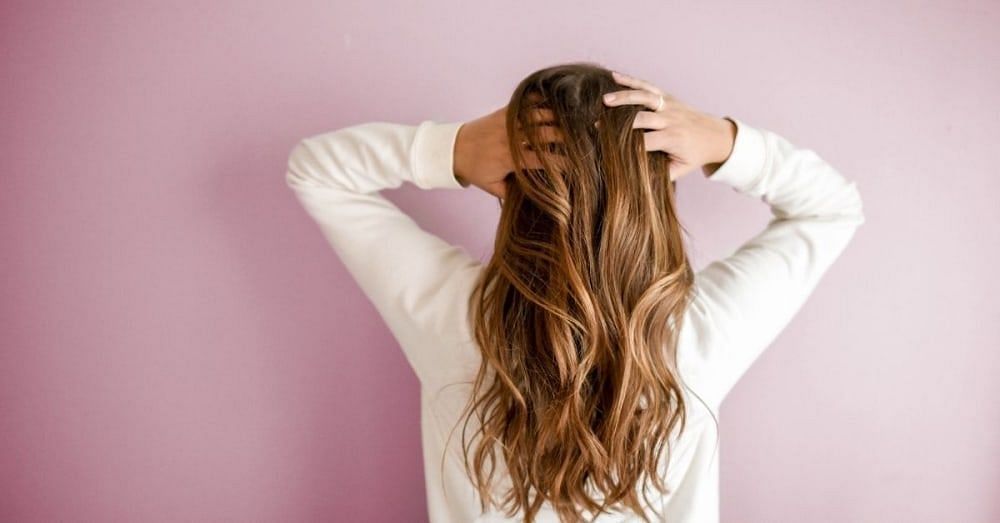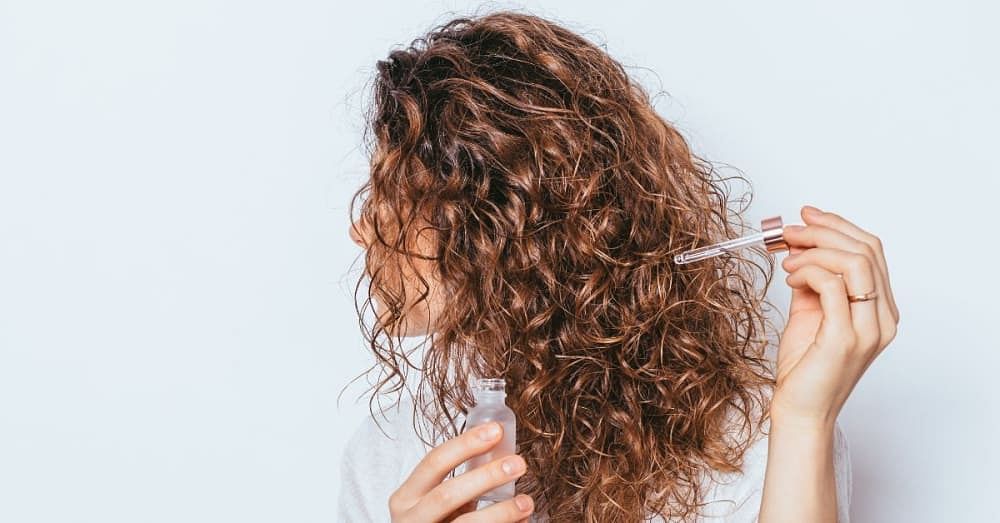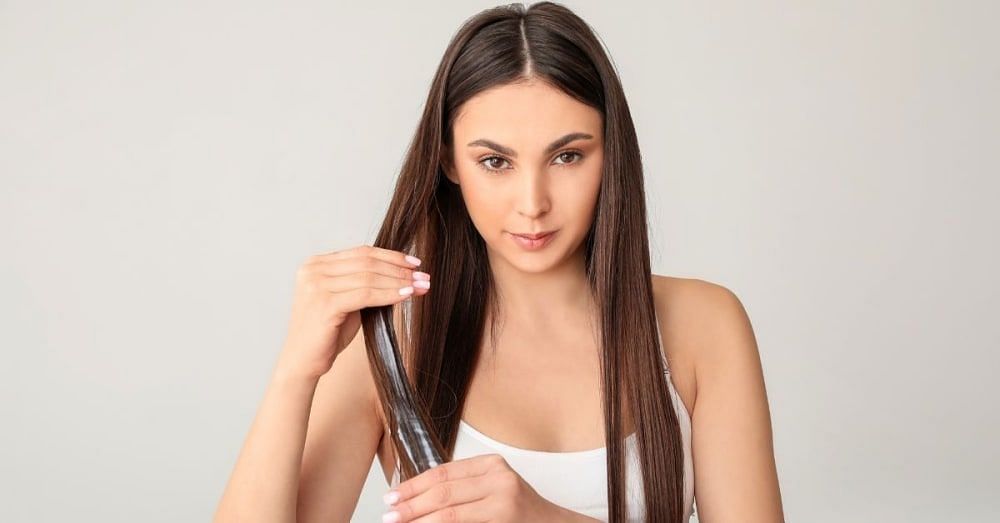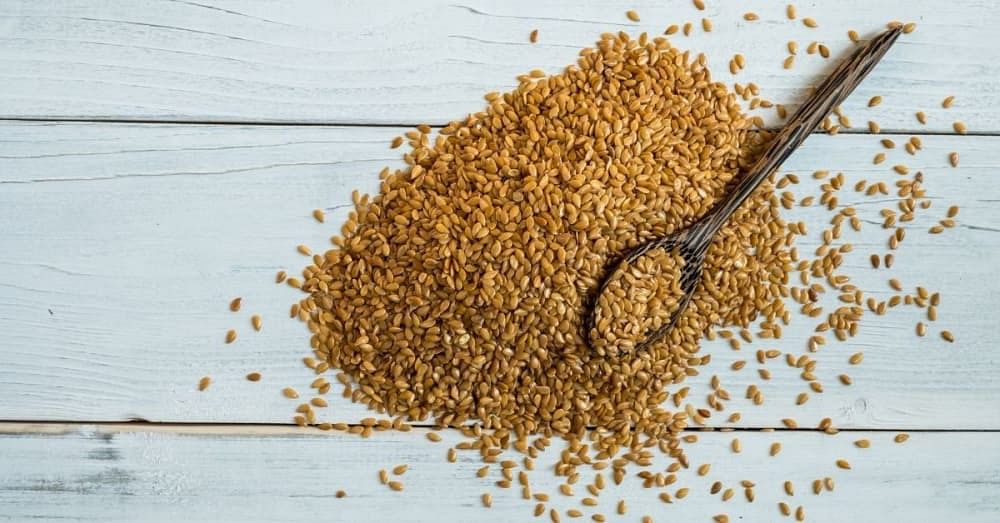It is normal to lose up to a hundred hair strands in a day. However, a receding hairline or hair thinning can be a symptom of female pattern hair loss.

According to research, almost 40% of women experience female pattern hair loss by the age of 50. There can be several reasons for hair loss like hereditary conditions, thyroid, pregnancy, scalp infection, unhealthy diet, and tight hairstyles. It is best to consult a dermatologist to determine the root cause of your hair fall. You can try a few home remedies for hair fall and regrowth along with your hair fall treatment at home.
What Is Hair Loss?
As already stated above, a few fallen strands on the floor, pillow, or towel are nothing to worry about. However, if you see too many fallen hair strands for weeks or any other symptom like hair thinning or baldness, you might be facing hair loss. It is called alopecia in medical terms. According to the Harvard School of Public Health, baldness and hair thinning are considered hair loss.
According to research, the following are some of the most common symptoms of hair loss:
- Hair thinning on top of the head, especially around the crown
- Bald spots on the head
- Excess hair fall
- Receding hairline
- Too many hair strands on your hand when you pass your fingers through your hair

What Is Female Pattern Baldness?
According to the Indian Journal of Dermatology, female pattern baldness or female pattern hair loss is a medical condition that causes hair loss, hair thinning, and bald spots in females. It is one of the most common causes of hair loss in women. The female pattern baldness affects the hair density on the crown and the frontal hairline.
Older women are more likely to show symptoms of female pattern baldness. However, it can also impact adolescents. Female pattern baldness usually occurs due to an imbalance of androgen and estrogen hormones in the body.
Alopecia and female pattern baldness is often used interchangeably to describe hair loss. The following are the three stages of female pattern baldness:
- Women usually experience hair thinning, especially on their crown, and slight hair loss on their midline parting. It is common in young women.
- In stage II, the midline parting becomes wide and is easily visible. Also, many short and thin hair is visible on the scalp.
- Stage III leads to decreased hair density all over the scalp. In this stage, a large bald spot is visible on the crown. Women usually experience this stage of female pattern baldness after menopause.
Tip to Regrow Hair Naturally in 3 Weeks
Hair loss occurs when the hair growth cycle slows down and excess hair strands. Therefore, it is also necessary to focus on hair growth and take preventive measures for hair loss. Here are a few natural remedies that can help regrow hair fast:
1. Peppermint Oil
The topical application of peppermint oil on bald spots can help regrow hair naturally. According to research, peppermint essential oil can induce the anagen or hair growth phase. It results in faster hair growth without any harmful side effects on the body. Peppermint oil usually starts showing signs of hair growth in two weeks.
You can mix a few drops of peppermint essential oil with a carrier oil like coconut or almond oil. Apply it to your scalp twice a week to see faster hair growth.
2. Rosemary Oil
Another essential oil with proven hair growth benefits is rosemary oil. According to research, rosemary oil is more effective in treating androgenetic alopecia than minoxidil. A study suggests that people who use rosemary oil lotion on the scalp twice a day see the significant hair growth and reduced hair fall. You can make rosemary oil at home by adding rosemary leaves to carrier oil.

3. Onion Juice
Onion juice is an ancient home remedy for hair fall and regrowth and reducing bald spots. According to research, onion juice contains a high amount of sulfur, also called a beauty mineral that promotes blood circulation in the scalp and regeneration of hair follicles. Sulfur also helps reduce inflammation and reduces hair fall due to scalp infections.
Moreover, onion juice is also rich in nutrients like magnesium, potassium, folate, and Vitamin C, which are essential for hair growth.
4. Coconut Oil
The topical application of coconut oil on the scalp is another effective home remedy for hair loss and promoting hair growth. According to research, coconut oil has an affinity for hair and can penetrate deep into the hair shaft. Coconut oil prevents protein loss from hair and hence, stimulates hair growth. You can apply coconut oil and leave it on for a few hours before washing your hair, or you can also keep it overnight.
5. Scalp Massage
Gently massaging your scalp for 10-15 minutes daily can also improve hair growth. According to a study, people that had gently massaged their scalp daily for 11-20 minutes saw significant hair growth and reduced hair fall. Hair massages increase blood circulation towards the scalp that makes hair follicles healthy.
6. Aloe Vera Gel
According to research, topical application of aloe vera gel on the scalp can stimulate hair growth and reduce hair fall. It contains enzymes that protect the scalp from infections. You can apply fresh aloe vera gel on your scalp or try various face masks like honey and aloe vera or lemon and aloe vera.

7. Curry Leaves
Another popular natural remedy that promotes hair growth is curry leaves. According to research, curry leaves are rich in beta-carotene and protein. It promotes hair growth and reduces hair fall. Curry leaves also contain high amounts of amino acids that strengthen the hair fiber.
You can make curry leaves hair masks, or hair oil at home. Apply it twice to the scalp once or twice a week to see significant results.
Facts Vs. Myths Related to Hair Loss
Just like any other condition, there are several myths about hair loss. Let us see some significant facts vs myths related to hair loss:
1. Myth:- Shampoos can treat hair loss
Fact:- Anti hair-fall shampoos are very common in the market, but they are ineffective in treating acute hair fall. However, medicated shampoos can be beneficial in reducing hair loss if you are experiencing hair loss due to a scalp infection.
2. Myth:- Washing your hair frequently can cause hair loss
Fact:- Even though a lot of hair strands come out while washing your hair, shampooing your hair has no direct relation to hair loss. The hair strands that fall in showers are usually weak and would have come out even without washing your hair.

3. Myth:- Getting frequent hair cut promotes hair growth
Fact:- You must have often been told to get a haircut every few months for faster regrowth. The truth is that hair growth or thickness is not affected by hair cuts. Since hair growth occurs at the roots, cutting rough ends will not impact hair loss.
4. Myth:- Hair loss occurs only during old age
Fact:- Female pattern baldness is more common during old age. However, hair loss can occur at any stage in life, even during adolescence, because of genetic conditions, hormonal imbalance, or scalp infections.
5. Myth:- Direct sunlight causes hair loss
Fact:- Direct sunlight does not cause damage to hair follicles. In fact, hair act as a shield to protect your scalp from direct sunlight.
Other Lifestyle Tips to Follow
Sometimes hair loss can also occur due to unhealthy lifestyle choices like a poor diet or excessive smoking. Here are a few beneficial tips for hair-fall control.
1. Avoid Smoking and Excessive Drinking
According to research, smoking can damage the DNA of the hair follicle and slow down the hair growth cycle. It can also cause premature greying of hair. Moderate alcohol consumption might not cause hair fall. However, excess alcohol consumption impacts the body's ability to absorb vital nutrients like iron and protein, which are crucial for hair growth. This can result in hair loss. Therefore, it is best to avoid smoking and excessive alcohol consumption to prevent hair loss.

2. Balanced Diet
Nutritional deficiency is a common reason for hair loss. Therefore, another important tip for healthy hair is to have a balanced diet that is rich in protein and minerals like iron, zinc, and folate. You can add berries, bananas, green leafy vegetables, amla, spinach, eggs, and more.
3. Healthy Sleep Cycle
According to the article by Sleep Center of Middle Tennessee, sleeping disorders can trigger the onset of androgenetic alopecia. An irregular sleep cycle can disrupt the secretion, which can cause hair loss. Therefore, it is necessary to have a healthy sleep cycle to prevent hair loss.
4. Try Protective Hairstyles
Tight hairstyles create pressure on your scalp and cause damage to the hair follicles. They also lead to excessive hair breakage and hair thinning. Tight ponytails can also be a cause for receding hairlines. Therefore, it is best to try protective hairstyles like braids, especially while sleeping.

When to See a Doctor
As you already know, women can experience hair fall multiple times during their lifetime. Hair fall can be seasonal or due to poor diet and unhealthy lifestyle. You can make lifestyle changes and try a few home remedies. However, if you continue to experience excessive hair fall for more than two weeks, it is best to consult a dermatologist. A lot of women also face hair loss due to thyroid, drug side effects, or genetic conditions. In such cases, too, you should see a doctor for hair fall treatment.
According to the research by the American Academy of Dermatology, you should consult a dermatologist as soon as possible if you think that you have female pattern hair loss. It helps determine the cause of hair loss at an early stage which is beneficial during the treatment.
Summing Up
Almost every other woman experiences hair loss at some point in their life. There are several reasons for hair loss like unhealthy diet, genetic conditions, thyroid, and more. Female pattern baldness is also a common reason for hair loss in women that occurs due to hormonal imbalance. Hair loss can result in hair thinning and bald spots on the head. You can try a few home remedies for hair fall and regrowth like castor oil, coconut oil, curry leaves oil, frequent scalp massages, and more.
References
- Famenini Shannon, October 2015; Demographics of women with female pattern hair loss and the effectiveness of spironolactone therapy - https://www.ncbi.nlm.nih.gov/labs/pmc/articles/PMC4573453/
- R B Mohile, May 2003; Effect of mineral oil, sunflower oil, and coconut oil on prevention of hair damage - https://pubmed.ncbi.nlm.nih.gov/12715094/
- Ralph M Trüeb, 2003; Association between smoking and hair loss: another opportunity for health education against smoking? - https://pubmed.ncbi.nlm.nih.gov/12673073/











